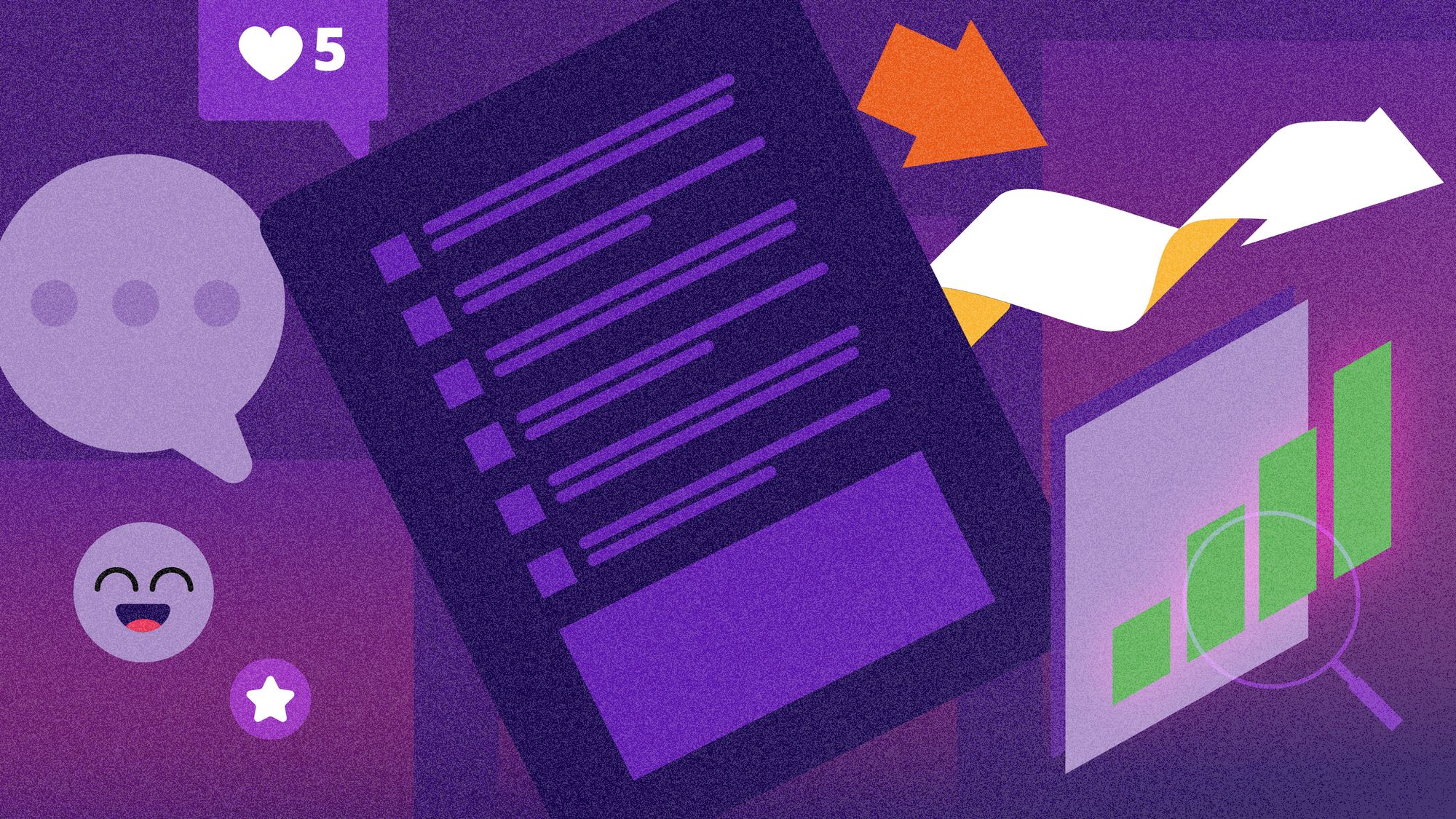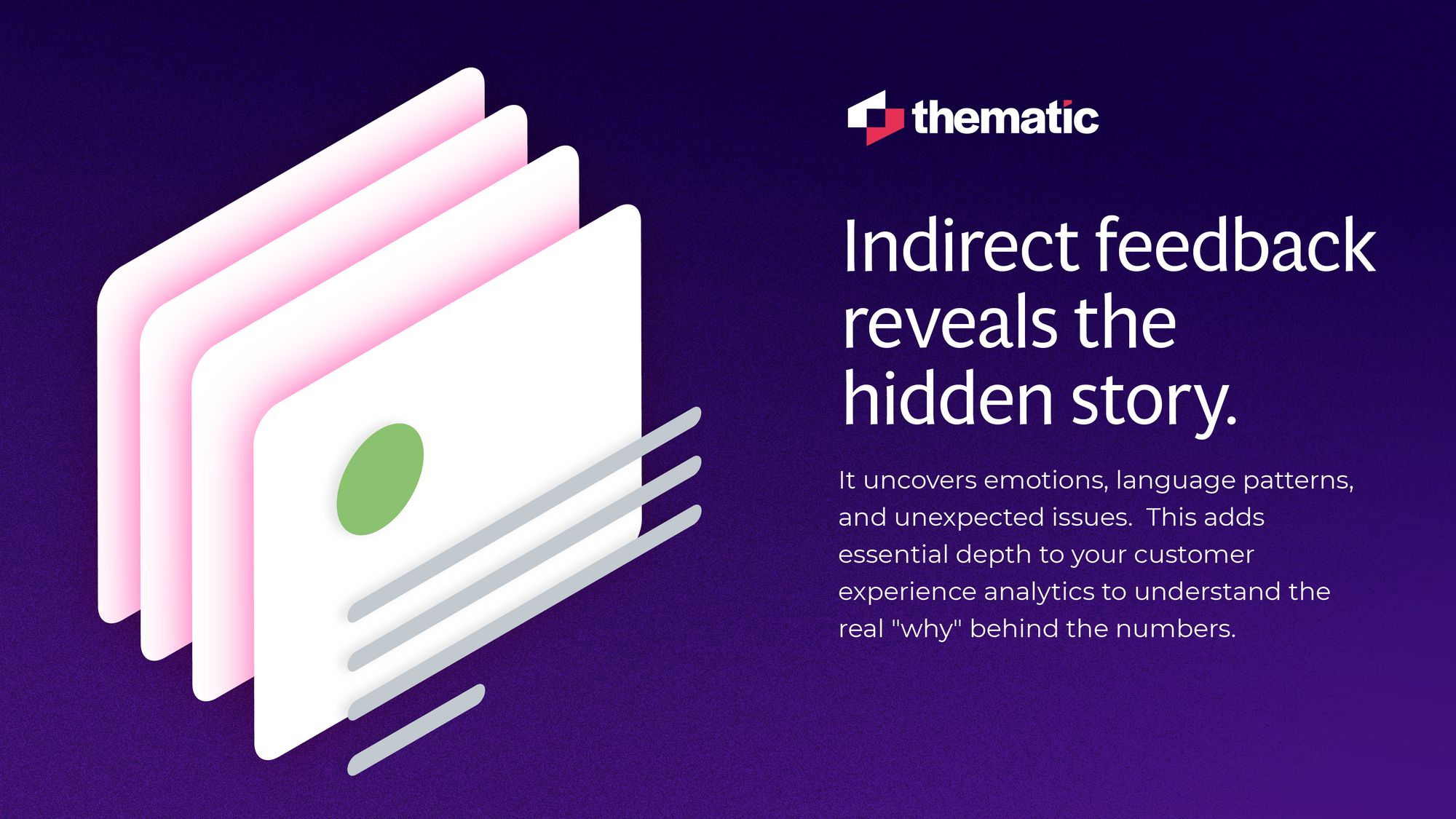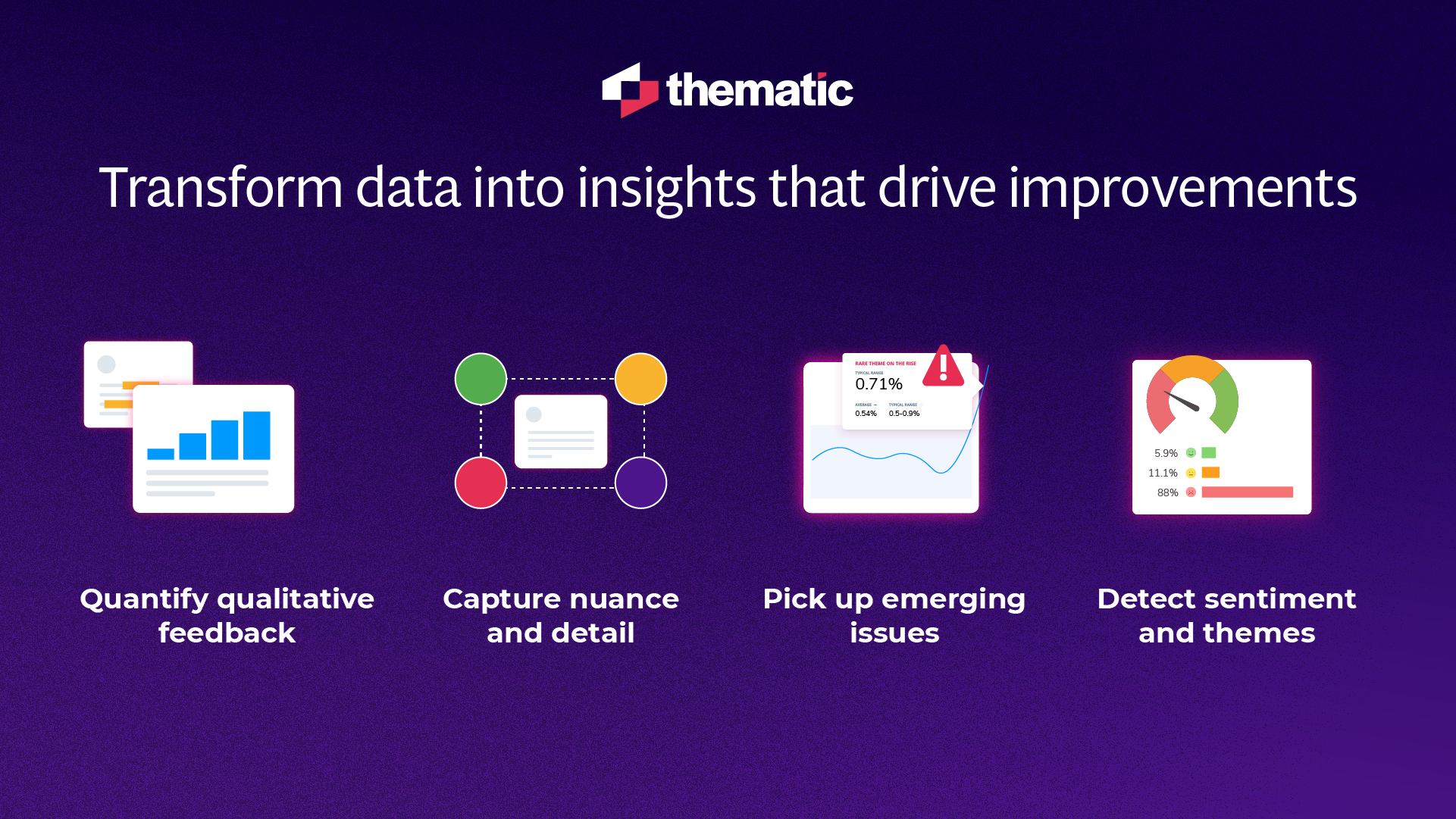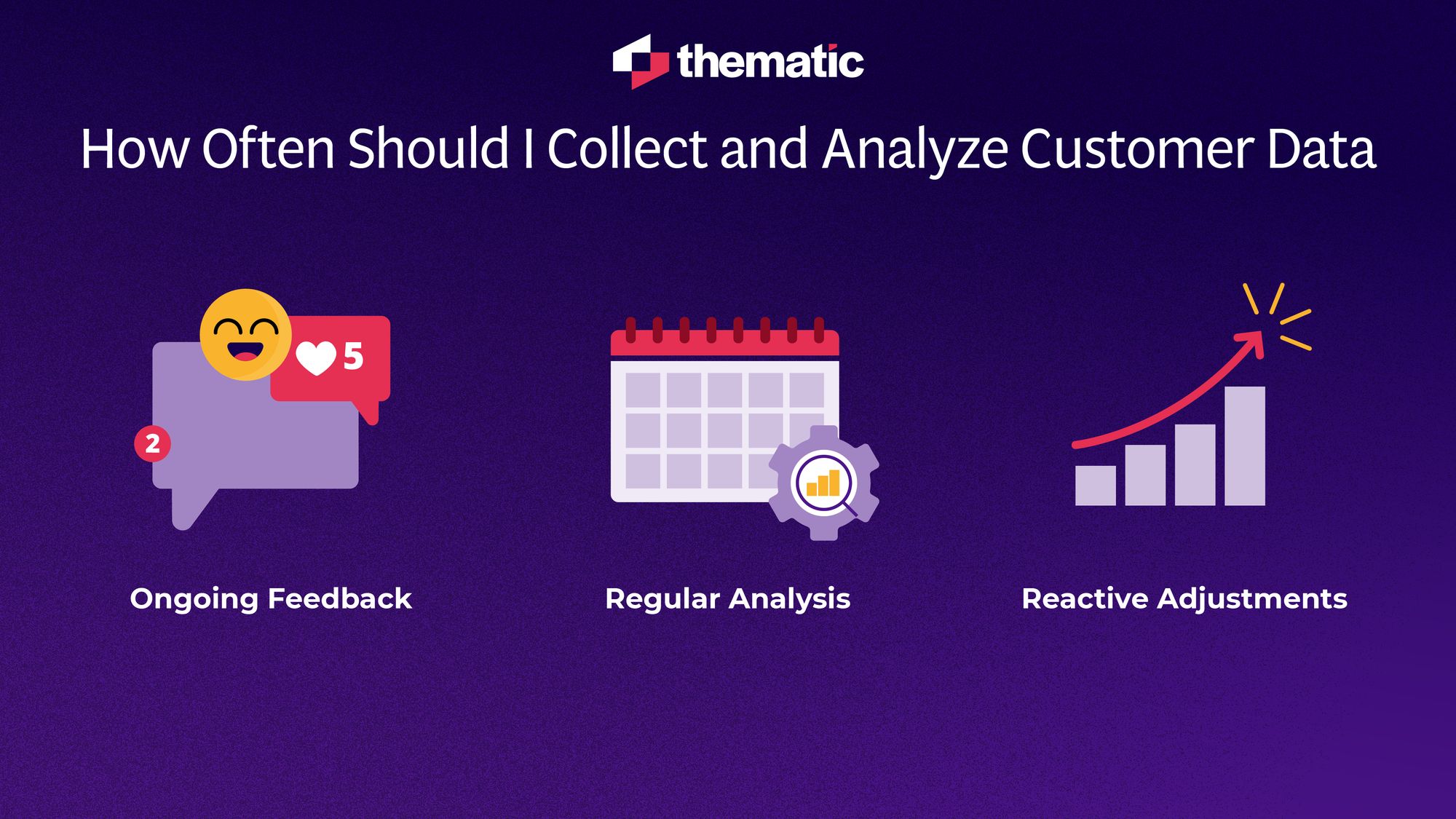
Customer Experience Analytics (CXA) is key to understanding why customers buy or churn. This guide will help you use your use customer data to get insights and understanding to drive better business decisions and improve revenue.

Customer Experience Analytics (CXA) is your key to unlocking the true reasons behind their choices and experiences. This understanding is crucial throughout the entire customer journey. Investing in truly understanding them has a massive financial payoff.
Our own customers have gained huge financial benefits through effectively analyzing customer data to improve customer experiences. This focus on optimizing the customer journey has proven to be a key driver of their success. Leveraging robust customer experience analytics solutions has been key to their success in enhancing customer satisfaction and driving revenue growth. Companies earning $1 billion annually often see an additional $700 million in revenue within just 3 years of prioritizing customer experience.
We've put together this essential guide to analyzing customer experience data, to help you drive better business decisions and improve revenue. By understanding and optimizing the customer journey, you can create a more seamless and satisfying experience for your customers.
CX Analytics is the process of collecting, analyzing, and understanding customer data. It aims to uncover the key drivers behind customer decisions and their overall experience with your brand. Customer experience analytics goes deeper than simple satisfaction scores.
Three major components make up the backbone of customer experience analytics: data collection, analysis, and generating actionable insights.
Customer experience analytics isn't just about identifying what's broken. It's about enhancing the customer journey at every touchpoint, analyzing all the data and unlocking the drivers that will truly delight customers.
By understanding their needs and pain points, you can proactively craft experiences that drive more revenue, build loyalty, and give your business a competitive edge.

Customer engagement anlytics transforms guesswork and intuition into strategic, data-backed improvements that directly impact your bottom line. Here's why.
CX analytics and CX data allows you to make informed decisions rather than relying only on gut instinct. It empowers you with the data to confirm the most important pain points, understand satisfaction drivers, and focus your resources and efforts on the actions that will have the greatest impact on customer experiences.
CX analytics helps you get ahead of problems rather than just reacting to them. By addressing issues early on, businesses can prevent negative experiences that could impact customer satisfaction and loyalty.
In today's crowded marketplace, a deep understanding of your customer engagement gives you a significant advantage. By mapping and analyzing the customer journey, you can differentiate your brand and offer a truly personalized experience. Predictive analytics enables you to tailor experiences and offerings to precisely match the preferences of your target audience, outshining competitors who are still making decisions in the dark.
Customer experience metrics lets you demonstrate the return on investment (ROI) of your customer-centric efforts. For example, understanding the factors that contribute to customer churn can lead to targeted interventions that improve customer retention rates and drive revenue growth.
The insights gained from these analytics can directly translate into improved customer satisfaction, increased retention rates, and higher customer lifetime value. By tracking how key metrics like retention, customer acquisition costs, and revenue change in response to insights gained through customer experience analytics, you can quantify the value of investing in exceptional customer experiences.
Customer experience analytics thrives on a comprehensive understanding of your customers and all the data. This means drawing insights from both the feedback you directly ask for and the unfiltered opinions customers express freely.
But what are the key differences?
Direct feedback are the specifics. It provides quantifiable data (customer satisfaction score, customer touchpoints, rankings, customer effort score, customer journey analytics) and targeted insights on features, processes, etc. This is perfect for tracking trends and measuring the impact of changes you make based on feedback.
Indirect feedback reveals the hidden story. Analyzing indirect feedback helps identify underlying issues that may be driving customer churn or negative customer behavior. This reveals what customers say when they think you're not listening. It uncovers emotions, language patterns, and unexpected issues. This adds essential depth to your customer experience analytics when collecting customer feed to understand the real "why" behind the numbers.
Customer experience analytics thrives on a mix. Direct feedback validates what you suspect, while indirect feedback can lead to groundbreaking discoveries you wouldn't have found otherwise.

Customer experience analytics thrives on a comprehensive understanding of your customers and all the data. This means drawing insights from both the feedback you directly ask for and the unfiltered opinions customers express freely.
But what are the key differences?
Direct feedback are the specifics. It provides quantifiable data (customer satisfaction score, customer touchpoints, rankings, customer effort score, customer journey analytics) and targeted insights on features, processes, etc. This is perfect for tracking trends and measuring the impact of changes you make based on feedback.
Indirect feedback reveals the hidden story. Analyzing indirect feedback helps identify underlying issues that may be driving customer churn or negative customer behavior. This reveals what customers say when they think you're not listening. It uncovers emotions, language patterns, and unexpected issues. This adds essential depth to your customer experience analytics when collecting customer feed to understand the real "why" behind the numbers.
Customer experience analytics thrives on a mix. Direct feedback validates what you suspect, while indirect feedback can lead to groundbreaking discoveries you wouldn't have found otherwise.

Satisfaction scores give you a snapshot of customer sentiment, but to truly understand what drives customer loyalty and decision-making, you need to tap into the Voice of the Customer (VoC). This means delving into the qualitative feedback that reveals their experiences in their own words.
Here's how.
Open-Ended Questions are Key:
Instead of just rating scales, invite customers to explain why they chose a rating. Ask about specific aspects of their experience, or for suggestions.
Raw Voice of the Customer data can seem overwhelming. Here's where analysis tools shine:
Combining Voice of the Customer analysis with your quantitative data is the real magic. This comprehensive approach helps you understand the "why" behind customer behavior and provides a roadmap for reducing customer churn and improving customer satisfaction.
The holistic approach allows businesses to identify and address the root causes of customer satisfaction or dissatisfaction. Suddenly, a drop in NPS scores has context – you know exactly WHAT caused the dissatisfaction, not just that it happened. Voice of the Customer data reveals the often-unstated reasons behind customer choices. Analyzing these alongside satisfaction scores provides the context to turn insights into impactful actions for your business.
Customer experience analytics is powerful, but its true value lies in translating data into the actions that drive improvement. Here's how to focus your efforts.
To discover what actions to take, you need to transform feedback data to find insights. Simple satisfaction ratings, keywords and sentiment will only scratch the surface. Thematic analysis software is your key. The software uses natural language processing (NLP) and other AI to analyze the qualitative and quantitative data in customer feedback at scale. Not only does the platform reveal if customers are happy (or not), but also the precise reasons why. It's much faster than manually coding feedback and delivers the most comprehensive quality of analysis.
Here's how Thematic Analysis transforms feedback data into actionable intelligence.
Thematic analysis software identifies patterns of meaning to find themes and sentiment in qualitative customer feedback. Across your surveys, chat, reviews your feedback is automatically structured to see who says what, when, and why. Since themes are quantified, you can also track themes and sentiment over time.
Context is key to understanding the insights from customer experience data analysis. Why did customers talk about Search? Did they all say the same thing about Search, or did the theme differ across the devices used. Thematic analysis software uses advanced AI to capture the nuances in customer feedback to get accurate results. For example, it can understand the phrase 'there's nothing I did not like' is a positive response. It will also identify every theme mentioned in a comment, to ensure every issue is picked up.
Thematic analysis software discovers themes from the data itself, or from the ground up. The bottom-up approach helps uncover emerging trends and patterns, enabling businesses to proactively address potential issues before they escalate. This means you can automatically spot emerging issues and trends, and add new rich context to existing themes.
Most other text analytics solutions decide on how the categories before the anlaysis begins, which limits what they find to what they know. A bottom-up approach to analysis empowers a business to proactively address issues before they snowball into churn or widespread dissatisfaction.
Thematic analysis and Sentiment analysis is not an either or. Sentiment analysis is often part of thematic analysis. It determines how customers feel based on the language they used. The problem with just using Sentiment analysis is that it only captures the positive or negative aspects of feedback. You would know that one person was happy and two unhappy. Combining thematic and sentiment analysis is a more accurate approach, It means you will discover what they were happy or unhappy about, and why, so you can take action.

When customers are unhappy, smart triage is essential. Your customer experience analytics data holds the key:
Analysis without action is pointless, but rushing into fixes without data is reckless. Customer experience analytics helps you find the balance, making every action count for improving the customer experience.
You've seen the power of customer analytics, but true success comes from making it an ongoing strategic focus across your entire organization. Here's how to unlock its full transformative potential.
The Value of Customer Experience Analytics to Your Organization
The ideal frequency depends on your business, but consistency is key.

Choosing the right CX analytics (CXA) tools is a critical decision that evolves along with your business. These solutions are essential for analyzing vast amounts of customer interactions data to prevent customer churn.
It's tempting to focus on the fanciest features, but the tools that truly empower you are those that match your goals, scale with your needs, and integrate seamlessly into your processes. Here are 5 guidelines to help you select the right customer experience analytics tools.
Before diving into tool comparisons, take a step back. What are your primary objectives for customer experience analytics? Do you want to deeply understand customer sentiment, predict churn, personalize experiences, or something else? Prioritize tools with robust features that directly support these goals.
Think ahead. As your customer base and data volume grow, will a simple tool quickly become a bottleneck? Consider platforms that can handle increased complexity and that you won't have to replace in a year due to limitations.
Disconnected tools create data silos, hindering your ability to see the full customer picture. Evaluate how well a customer experience analytics tool integrates with your existing CRM, survey platforms, marketing automation systems, other sources of relevant data, and customer interactions.
Even the most powerful tool is useless if it's difficult to learn and use. Consider the technical expertise of your team and whether a tool is intuitive enough to be adopted quickly. Easy-to-understand reporting and visualization features are essential for gaining actionable insights without a data science degree.
Customer experience analytics tools range in cost, from basic options to enterprise-level platforms. Carefully balance the investment with the potential return. Start with a clear understanding of the specific business problems the tool will help you solve and how the resulting improvements will drive measurable financial value. A robust customer experience analytics solution should help you measure and improve customer satisfaction, and drive overall business growth.
Customer experience analytics is your roadmap to truly understanding what drives customer satisfaction – and dissatisfaction. The key is in transforming both the feedback you ask for and the unfiltered Voice of the Customer (VoC) into action. By consistently analyzing data, uncovering patterns, and pinpointing the root causes of customer experiences, you unlock the power to delight customers and build lasting brand loyalty.
Ready to see the potential of Voice of the Customer-powered customer experience analytics? Thematic makes it easy. Our platform seamlessly integrates your customer feedback and uses advanced analysis to uncover themes, sentiment, and hidden insights that shape customer experiences. Try Thematic's free demo and experience firsthand how to transform your customer data into a roadmap for exceeding expectations and outpacing the competition.
Join the newsletter to receive the latest updates in your inbox.